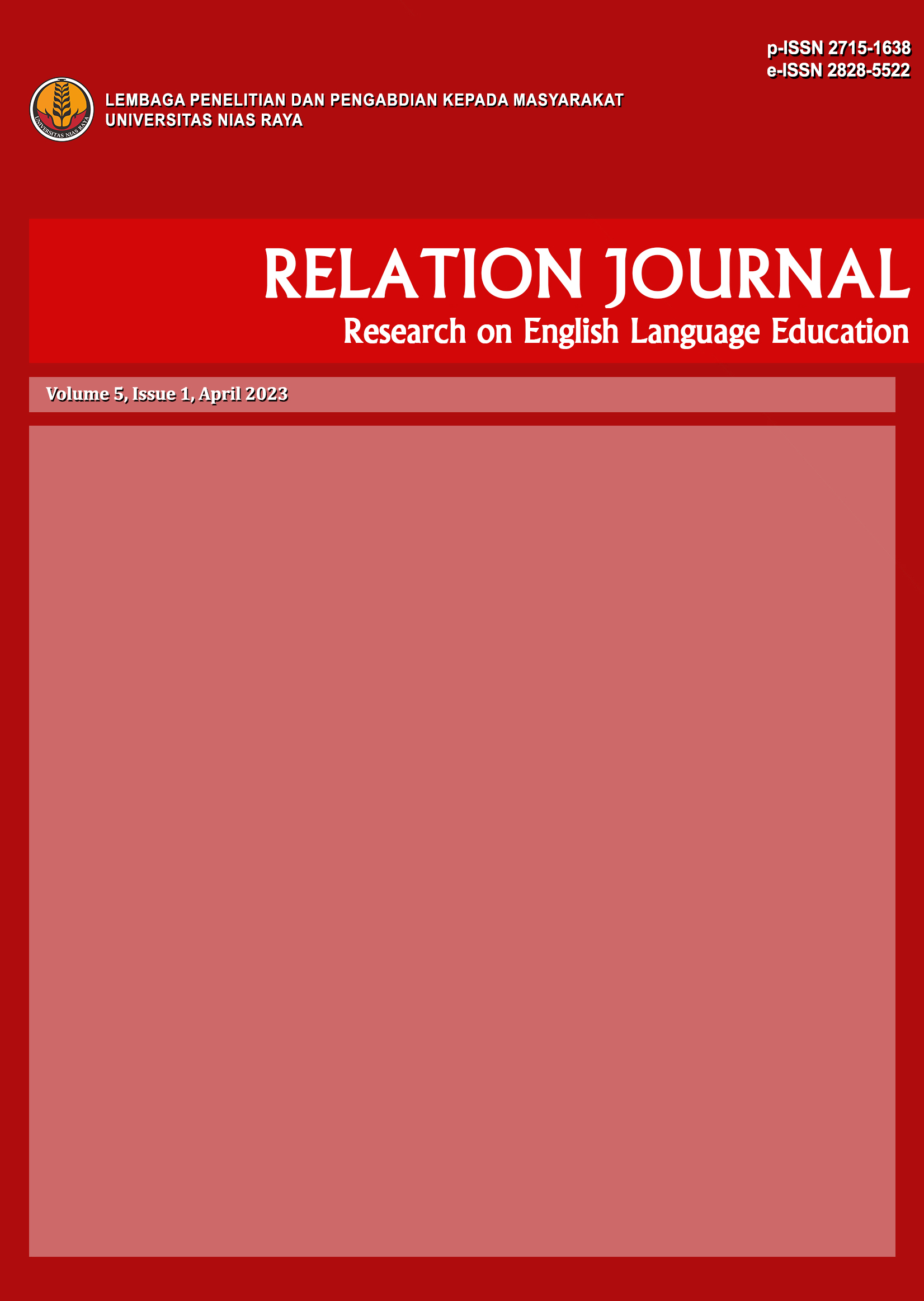ILLOCUTIONARY ACT FOUND IN A BOX OF HOPE MOVIE
Guru Bahasa Inggris, di SMKS Nusantara Telukdalam
Abstract
Language is the most important tool for human to share knowledge and idea. The way people used language to covey messages and idea in certain society is studied in pragmatics. sometimes, people do not only convey messages by using utterance, instead they use utterances to make someone perform action which is called illocutionary act. The aims of this research were to find out the classification of illocutionary act in A Box of Hope Movie and the meaning of each sentence that has been classified in illocutionary act. The researcher focused on analyzing illocutionary act based in Searle’s five category of illocutionary act; representatives, directives, commissives, expressives, and declarations. This research was designed in descriptive qualitative research which focused on the analysis of Illocutionary act. The result showed that there are five types of illocutionary act found in A Box of Hope Movie. The total of illocutionary found in the movie is 233 utterances, 57 representatives, 74 directives, 52 commissives, and only 2 declarations. The meaning of illocutionary act found in the movie often leads to perform an action and sometimes does not always correspond to the literal meaning. It can be concluded that all the types of Searle’s five category of illocutionary act were found in A Box of Hope Movie and the meaning of each illocutionary act can be interpreted based on the listener interpretation toward the utterance.
References
Birner, Betty. J. 2013. Introduction to Pragmatics. UK: Wiley Blackwell
Finegan, Edward. 2008. Language: Its structure and use. US: Thomson Wadsworth
Coll 2011. Communication in The Real World: An Introduction to Communication Studies. Libraries Publishing.
Creswell, J. W. 2018. Research Design: Qualitative, Quantitative, and Mix Methods Approaches (5Th Ed). LA and London: SAGE Publication Inc.
Holmes, Janet. 2013. An Introduction to Sociolinguistics (5th Ed). London and New York: Routledge
Levinson, S. C. 1983. Pragmatics. New York: Cambridge University Press
Miles, M. B. and Huberman, A. M. 2014. Qualitative Data Analysis. LA and London: SAGE Publication Inc
Schreier. 2012. Qualitative Content Analysis Practice. London: SAGE Publications Ltd
Searle. 1980. Speech Act Theory and Pragmatics. London: D. Reidel Publishing Company
Thomas, J. 2013. Meaning in Interaction: An Introduction to Pragmatics. London and New York: Routledge
Wardhaug and Fuller. 2015. An Introduction to Sociolinguistics. UK: Wiley Blackwell
Yule, G. 1996. Pragmatics. New York: Oxford University Press.
Yule. 2017. The Study of Language (7th Ed). UK: Cambridge University Press
Sources from Journals
Rahayu. 2018. Illocutionary Act in The Main Characters’ Utterances in Mirror Mirror Movie https://www.neliti.com/id/publications/240578/illocutionary-act-in-the-main-characters-utterances-in-mirror-mirror-movie
Tutuarima. 2018. An analysis of Speech Act Used in London Has Fallen Movie https://journal.walisongo.ac.id/index.php/vision/article/view/3022
Marbun. 2020. An Analysis of Speech Act in The Grown Ups Movie https://journal.upp.ac.id/index.php/JEE/article/view/407
You are free to:
- Share — copy and redistribute the material in any medium or format for any purpose, even commercially.
- Adapt — remix, transform, and build upon the material for any purpose, even commercially.
- The licensor cannot revoke these freedoms as long as you follow the license terms.
Under the following terms:
- Attribution - You must give appropriate credit , provide a link to the license, and indicate if changes were made . You may do so in any reasonable manner, but not in any way that suggests the licensor endorses you or your use.
- No additional restrictions - You may not apply legal terms or technological measures that legally restrict others from doing anything the license permits.
Notices:
- You do not have to comply with the license for elements of the material in the public domain or where your use is permitted by an applicable exception or limitation.
- No warranties are given. The license may not give you all of the permissions necessary for your intended use. For example, other rights such as publicity, privacy, or moral rights may limit how you use the material.









